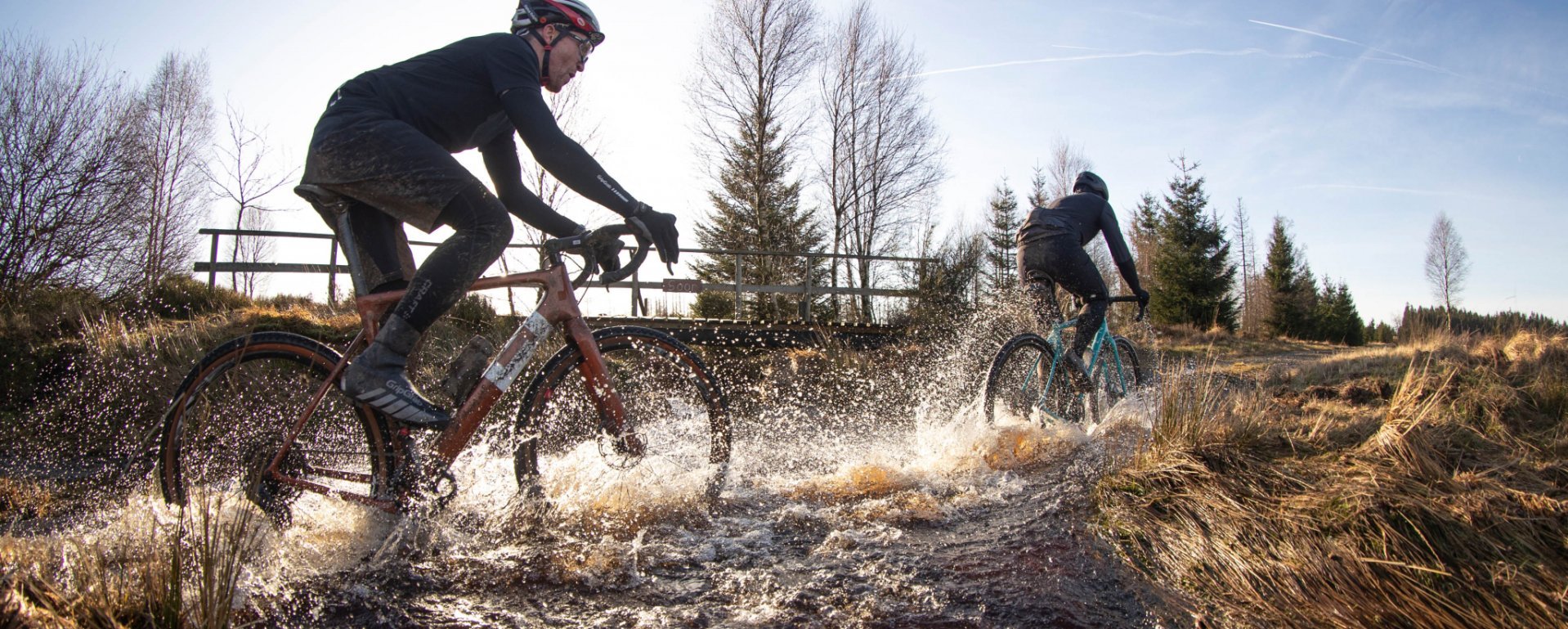
Product test: Thermoformable bike saddles from ...
A bike saddle that adapts to your anatomy? We have tested the thermoformable saddles from REFORM for you, which promise exactly that.
Gravel handlebars are the new trend in drop bars. Learn here what flare, drop, reach, and back sweep mean and why they matter.
Gravel handlebars are a variant of the classic road handlebars. The basic shape is the same, but the form and dimensions differ significantly. Subtle differences decide, whether a handlebar fits you perfectly or ends up being a poor compromise. This is why a bit of theory and thought is necessary before you choose your gravel handlebar.
Classic road cycling is about speed. Aerodynamics is a key factor for success and the road handlebar should position the rider in as streamlined a spot as possible. All measurements that make the handlebar a bit more comfortable adhere to this “aero-dictate.” This is why road handlebars are narrow, extend far forward, and the drop bar is significantly lowered. That's the pure road bike doctrine.
With a gravel bike, you leave the paved road, the high speed of a peloton, and often the safety of a designated race track. Then, a bike and handlebar must also optimally fulfill aspects other than just speed and aerodynamics: Along with low wind resistance, comfort, control, and visibility (in traffic or for admiring nature) gain importance. The shape of the gravel handlebar accounts for this.
To perfectly pick your new handlebar, you should know the measurements of the currently mounted handlebar. Take the opportunity to also directly measure your stem.
Since the mix of aerodynamics, control, comfort, and visibility can yield very different results, handlebars under the “gravel” category can vary significantly. Your choice of handlebar starts with your ergonomics: What's your size and build? The larger, wider, and heavier you are, the wider your handlebar should be. As a rule of thumb for classic road handlebars, it should align your shoulders, elbows, and wrists in one line. Whether you're holding the brake shifters or on the drop bar is irrelevant, as these are on the same axis for classic road handlebars. This isn’t the case with most gravel handlebars.
Most gravel handlebars flare out in the drops, meaning they get wider towards the bottom. This measurement is called “Drop Flare” or simply “Flare” and is expressed in degrees. The range can be from a few to over 20 degrees. Three ideas stand behind the Drop Flare: First, a lot of off-road riding happens on the drop bar. More width means more leverage and thus more control - something familiar from mountain bikes. Second, with active riding on the drop bar, the forearms move quite a bit. A pronounced Drop Flare prevents painful collisions with the upper handlebar. Also, more Flare provides more space between the drop bar, hands, and knees, avoiding collisions during slow riding and sharp turns.
For the ideal width of your gravel handlebar, you thus have three potential reference points: the width of the upper handlebar, the width at the level of the brake levers, and the width of the drop bar. Our tip: The handlebar should match your preferred grip position's “shoulder width” as a rule of thumb and be more or less flared out at the bottom depending on the application area. If you're mainly riding at high speeds on poor roads or gravel paths, you keep the Drop Flare minimal. If you're moving your gravel bike more in terrain and on single trails, a larger Flare will help you.
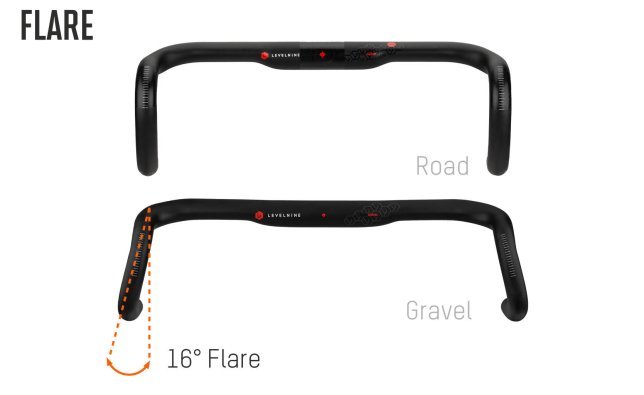
The reach measures how far the handlebar's drop section extends forward from the top bar, determining the position of the brake-shift lever. The greater the handlebar's reach, the more stretched your riding position will be. Of course, the stem also plays a role here: a long reach can be ergonomically balanced with a shorter stem — and vice versa. Gravel handlebars generally have a shorter reach than speed-oriented road handlebars.
Tip: Our filters allow you to search specifically for the reach you want.
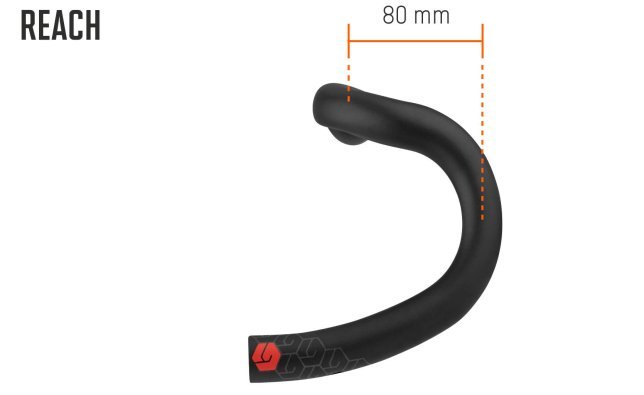
The vertical distance between the top and drop sections of the handlebar is called the drop. On a classic road bike, a large drop is designed for speed, allowing racers to adopt a more aerodynamic, tucked position. On a gravel bike, this is less important, so the drop is usually smaller. Additionally, when riding off-road, you typically keep one or two fingers on the brake lever while holding the drops. A large drop would make it harder to maintain this important brake control.
A deep drop also limits your visibility of the ideal line and reduces your mobility on the bike. Whether a drop feels comfortable and rideable to you also depends on what you consider your neutral hand position. Put simply: Is your handlebar mounted high, so that reaching for the drops feels like "going into the basement," or is it mounted low, making the move from drops to tops feel like "climbing to the attic"?
Our tip: The more off-road you ride, the more the drops should be your standard position — and the smaller the drop should be. Drop size also relates to your torso and arm length: the larger your upper body dimensions, the more drop you can handle comfortably.
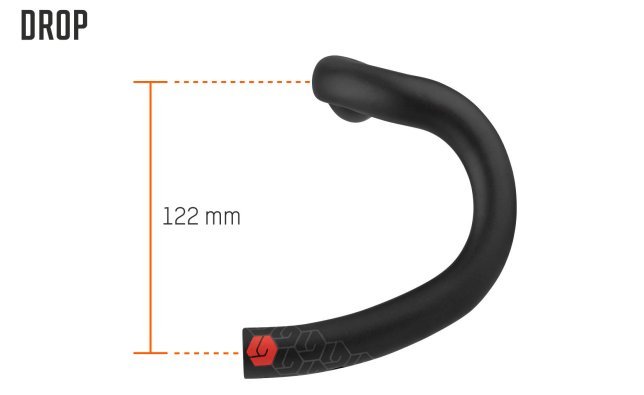
The backsweep describes the bending of the handlebar towards the rider. This backward bend is felt by many to be more comfortable when holding the top of the handlebar compared to a straight top handlebar. Simultaneously, it's a trick in the entire handlebar design because the reach of the handlebar is shortened without changing the form and size of the handlebar's curve. Logically, the backsweep is also in relation to the length of the stem. The greater the backsweep, the longer the stem needs to be to keep the brake shift levers in the same position.
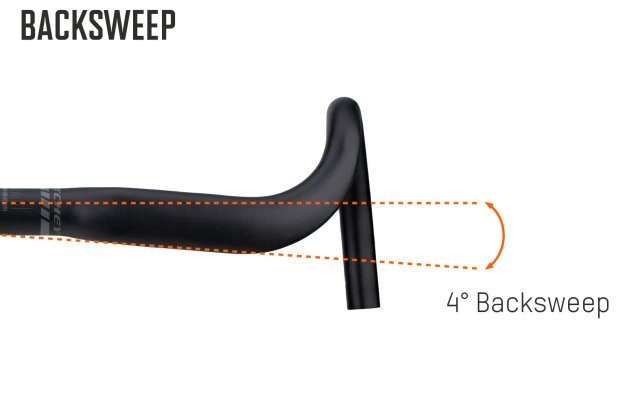
If we stick to the "floors" analogy, some gravel handlebars, like the Hover series from Specialized or the ErgoMax models from Ritchey, have an extra feature. Their tops have a rise like an MTB handlebar, lifting them besides the stem clamping. Think of this as a "third floor" that raises the upper grip without affecting the shape of the drop. Naturally, there's also an interaction with the stem height because the rise adds to the stem height. The Truck Stop bar by Surly has the highest rise (30 mm) - we're talking MTB dimensions here!
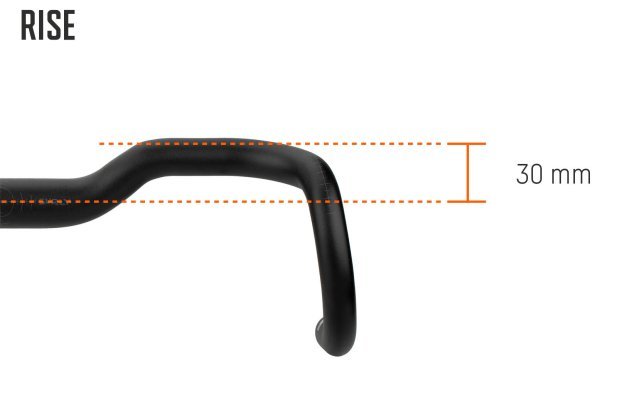
As early as the 80s, the first road handlebars were emerging, whose horns had an ergonomic bend instead of a constant radius. This shape is particularly relevant for gravel handlebars since the handlebar is held in this area once the terrain gets challenging or the ride gets faster. "Form-fitting" is the keyword from ergonomics that counts here: The more contact area between hand and handlebar, the more comfortable the grip, and the better the control during wild rides. A double S-bend in the bend, such as found on the VentureMax handlebars by Ritchey (picture on the left), has proven to be especially comfortable for many riders.
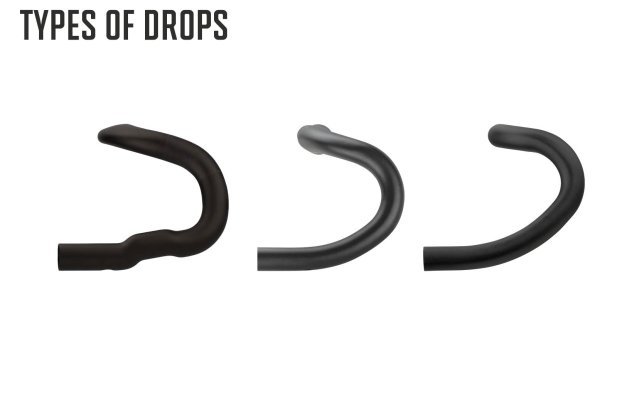
To balance the ergonomic design and dynamic functionality of a gravel handlebar, the ends of the horns are also bent outwards. This measure is called "flare out" and, like flare, is measured in degrees. These flared handlebar ends (like on the Service Course SL-70 XPLR bar by Zipp) ensure that the knees and handlebar don't collide prematurely when steering. Many riders also find a flare out comfortable, similar to the backsweep on a mountain bike handlebar.
If you're starting a bikepacking tour with your gravel bike, then luggage transport becomes a topic in choosing a handlebar. A wider handlebar accommodates a wider handlebar roll. Drop flare also increases the "storage space" between the handlebar, as long as the bag doesn't sit directly under the top handlebar. However, a large flare out may lead to collisions between the brake shift levers or hands and the roll. In any case, you should check the harmonious interplay of handlebar and bag before the first tour. Keep in mind that brake- and shift cables or casings might collide with the bag when steering, then they need to be replaced with longer ones.
True exotics sometimes come into play with gravel bikes. The RM-016 by Nitto has only a 50-mm-drop and a maximum of four-degree flare drop, so it can hardly be called a dropbar, but rather a "dropped Mustache". The Discover Carbon 31.8 by Pro boasts of offering space for top handlebar brake levers like those from the GRX series by Shimano.
One thing all gravel bike riders agree on: The stem clamp has a diameter of 31.8 mm. But it's also worth paying attention to the handlebar's clamp width, especially if you want to mount a time trial extension or multiple devices (GPS, battery light, etc.). For instance, Salsa's gravel handlebars feature an exceptionally wide clamping area. On the other hand, an aerodynamically ovalized top handlebar significantly reduces the space for such attachments.
As mentioned before, there are interactions between the dimensions of the gravel handlebar and the stem used. Therefore, you should consider them as a unit: The perfect gravel handlebar is nothing if the dimensions of the stem put it in the wrong position. So, match their sizes.
Some gravel handlebars have recesses for cables and wires, making them less bulky - this usually results in a more comfortable grip. Also, there are handlebars, like the Service Course 70 XPLR by Zipp, that are compatible with the electric junction EW-RS910 for Shimano's Di2. For gravel bikes, it's also worth getting extra thick handlebar tape like DSP 3.2 by Lizard Skins or simply wrapping two layers: Long-distance veterans with big hands often wrap two layers of handlebar tape.
Choosing between an aluminum or carbon gravel handlebar is more than just a matter of weight, although it's clear that carbon handlebars are lighter. Carbon handlebars are often designed to offer a lot of lateral stiffness for sprints and steering precision while providing some flex in the vertical direction on rough surfaces to prevent early fatigue from vibrations. For those going on adventure tours with various bags and attachments, aluminum, on the other hand, is the more robust choice.
No matter which material you choose: Pay attention to good tools to avoid rounding off the screws and always follow the manufacturer's torque specifications. Don't forget the carbon assembly paste.
The alignment of the handlebar and the positioning of the brake/shift levers in the handlebar bend are especially important for gravel handlebars. Unlike road bikes, the straight bars of the handlebar horns are not aligned horizontally to the ground but are adjusted so that they are comfortable to grip individually. The position of the brake/shift levers is generally higher on a gravel bike than on a traditional road bike. It's important that the hoods are comfortably positioned when you grip them. At the same time, you need to be able to easily reach the brake levers when you're in the drop. Many manufacturers have put markings on the handlebar bend to simplify systematic adjustments and ensure both sides are aligned evenly.
